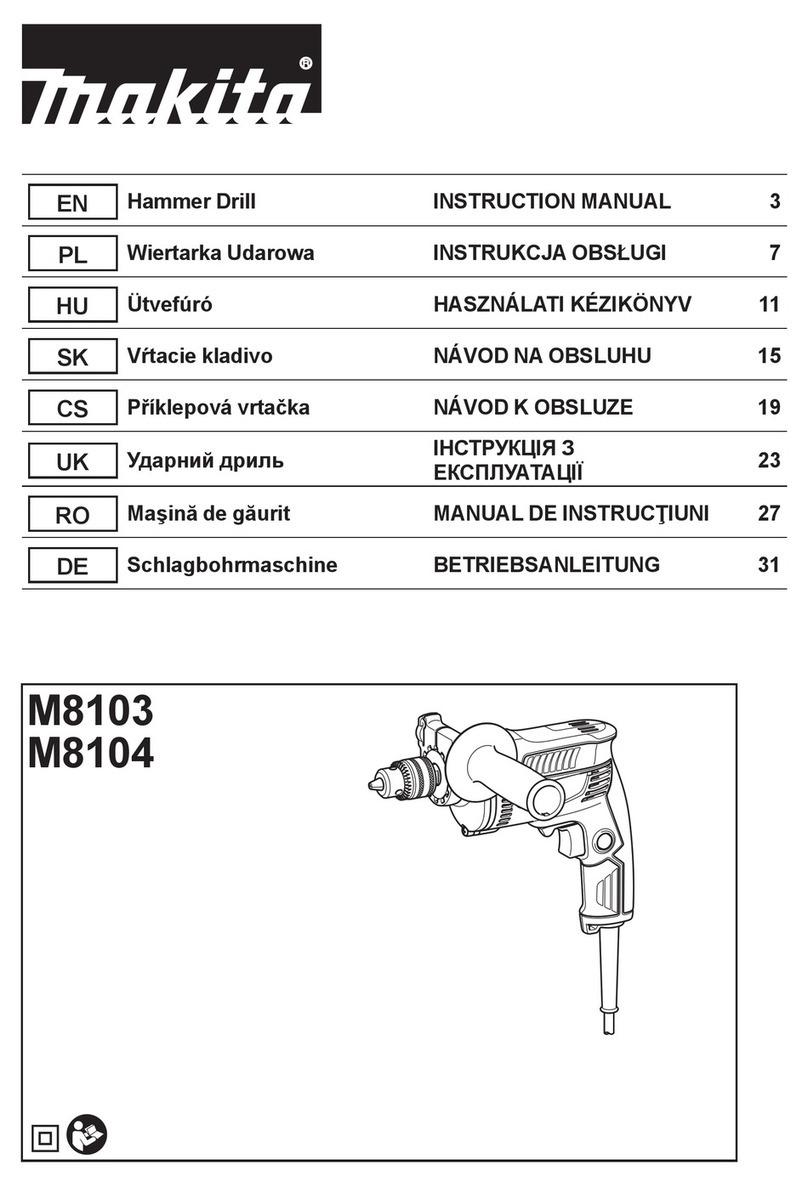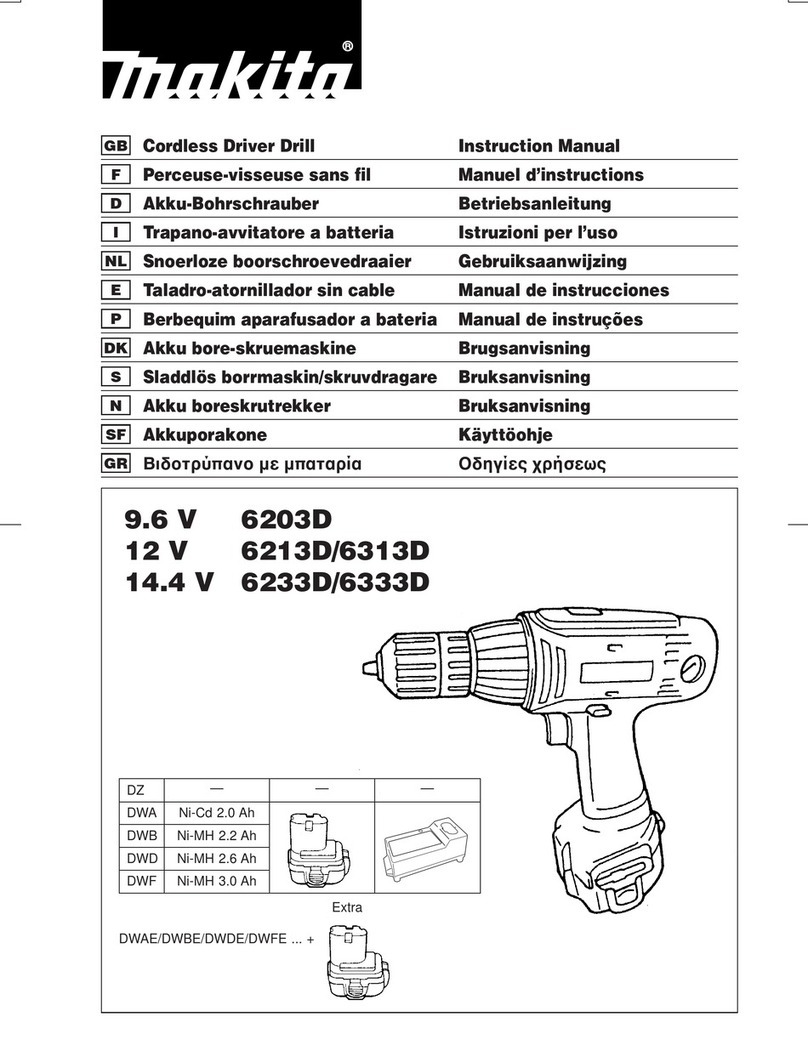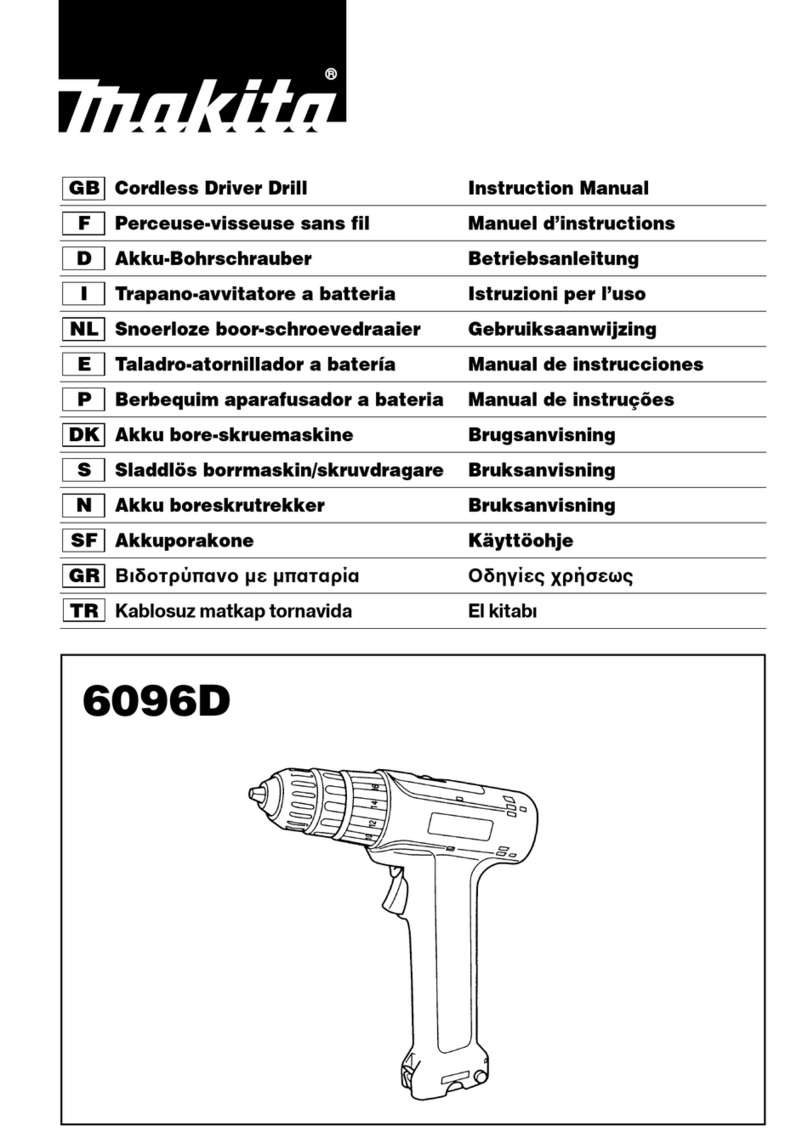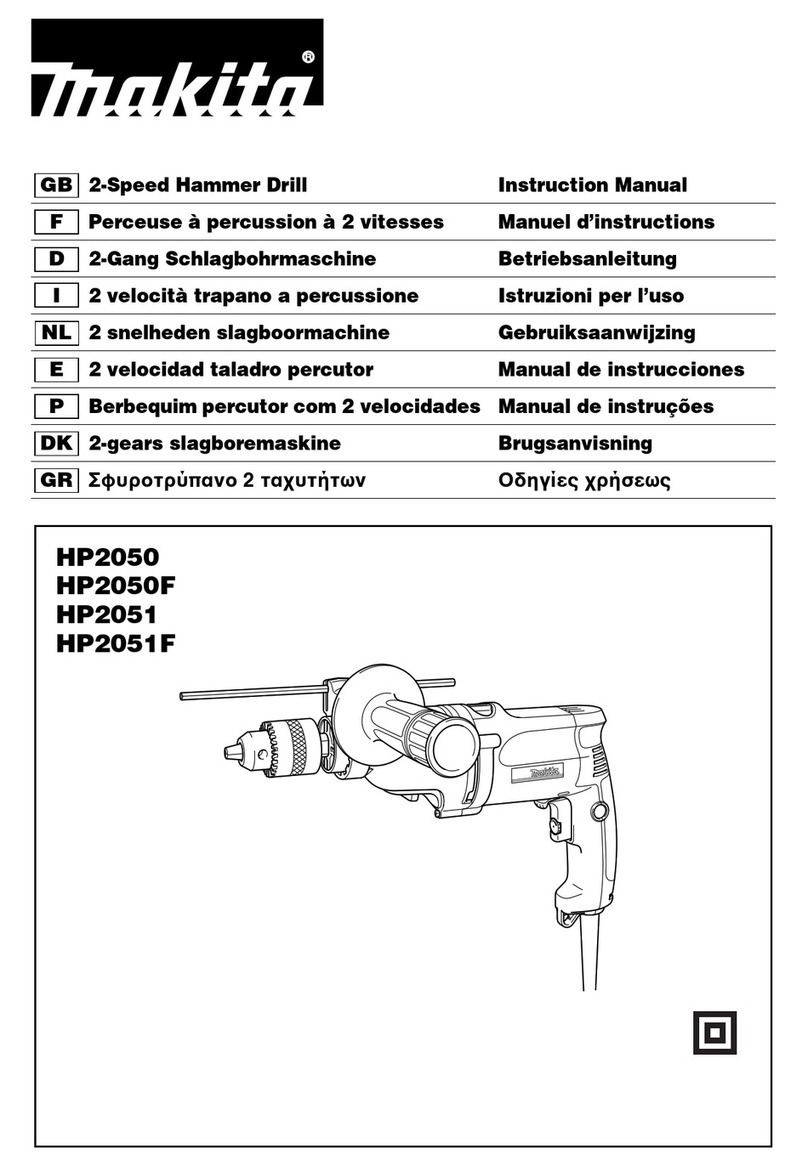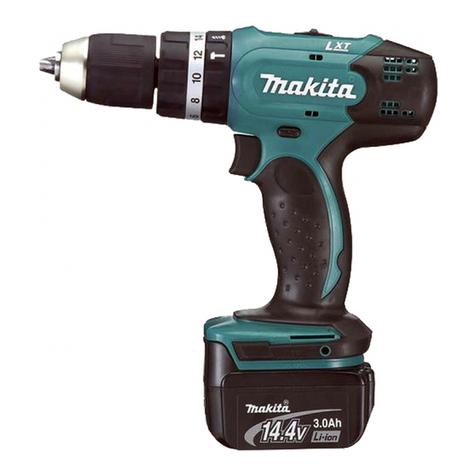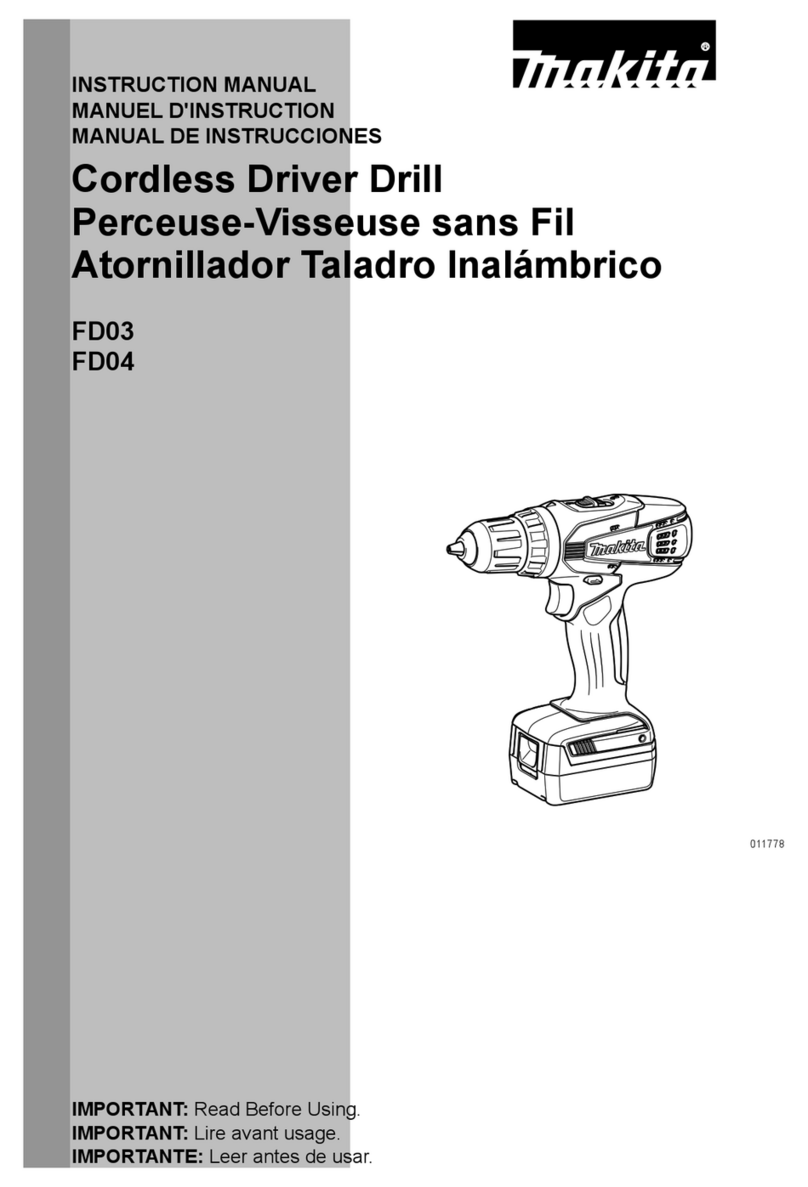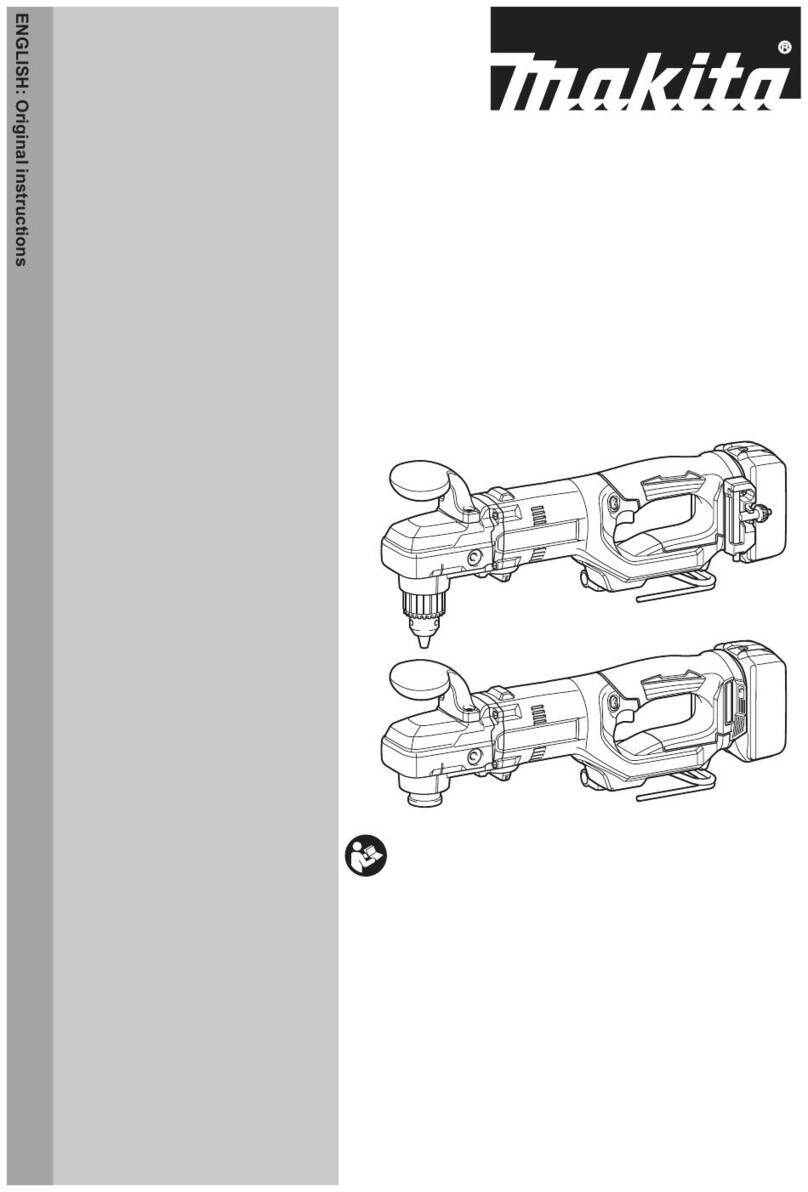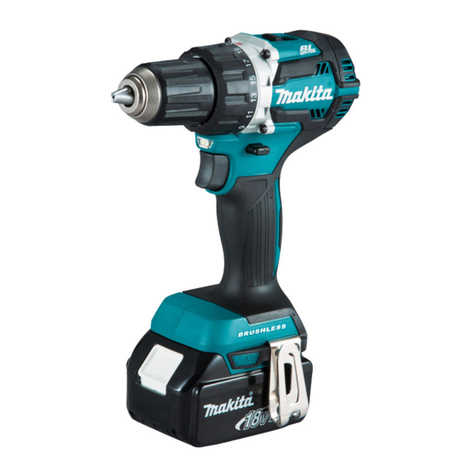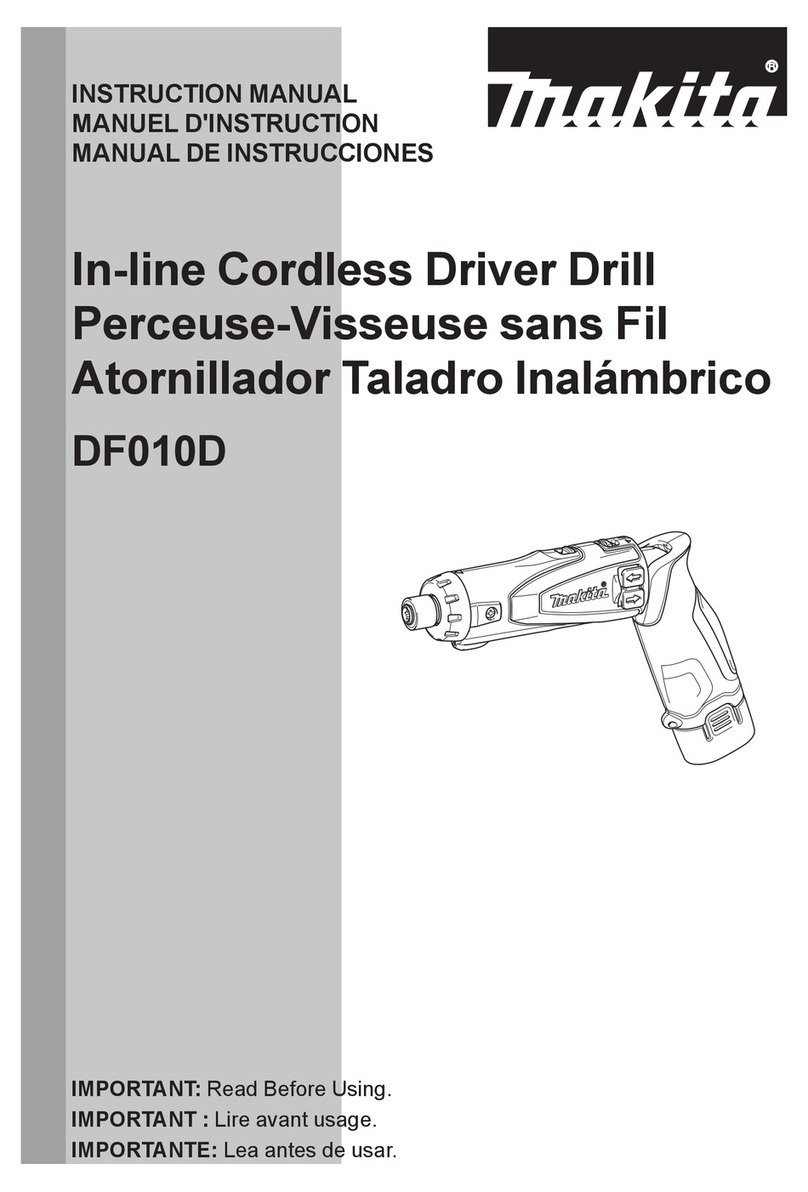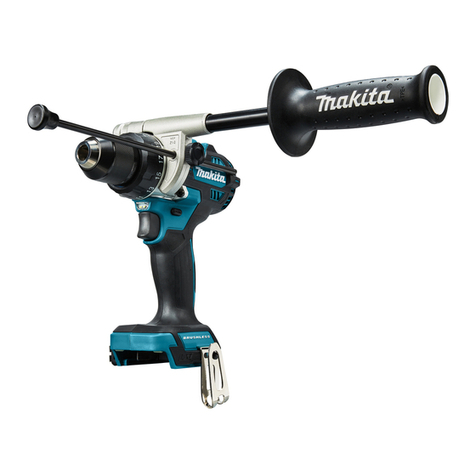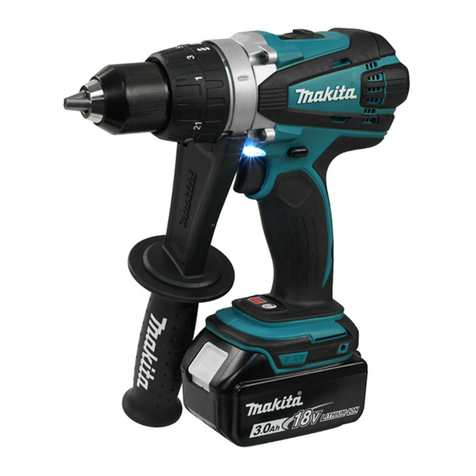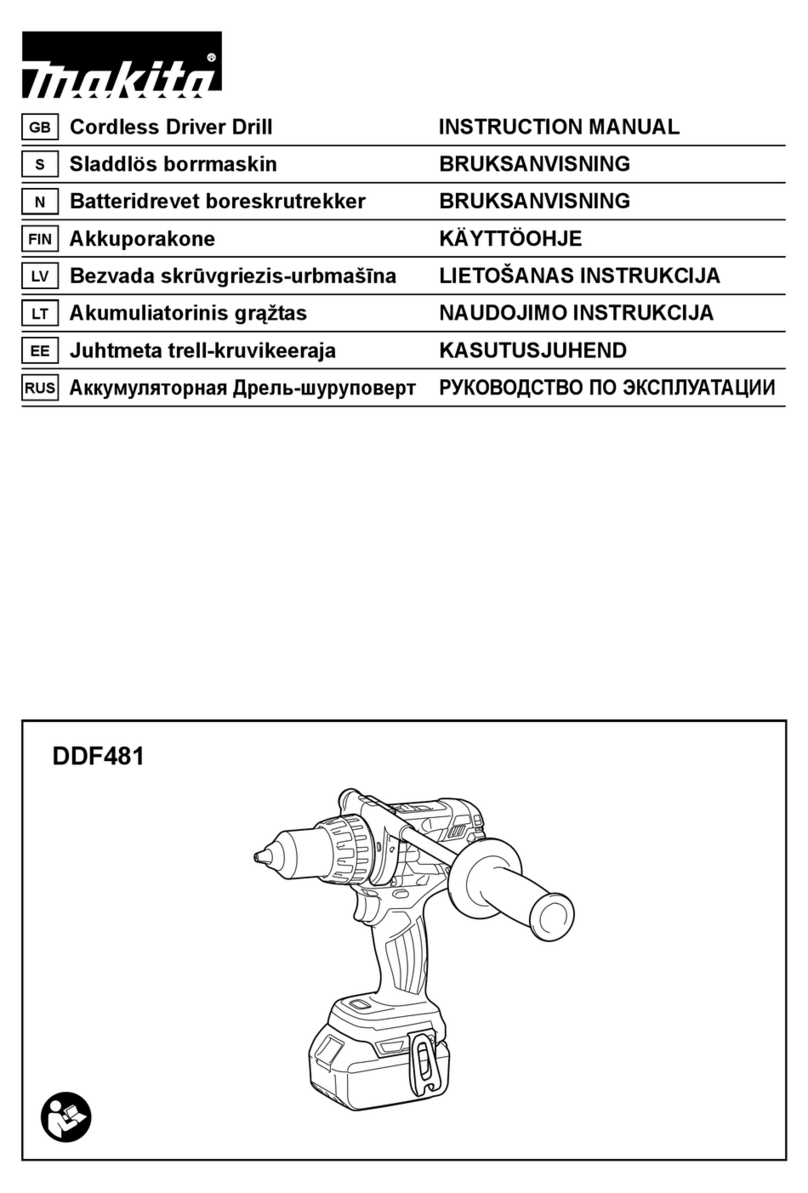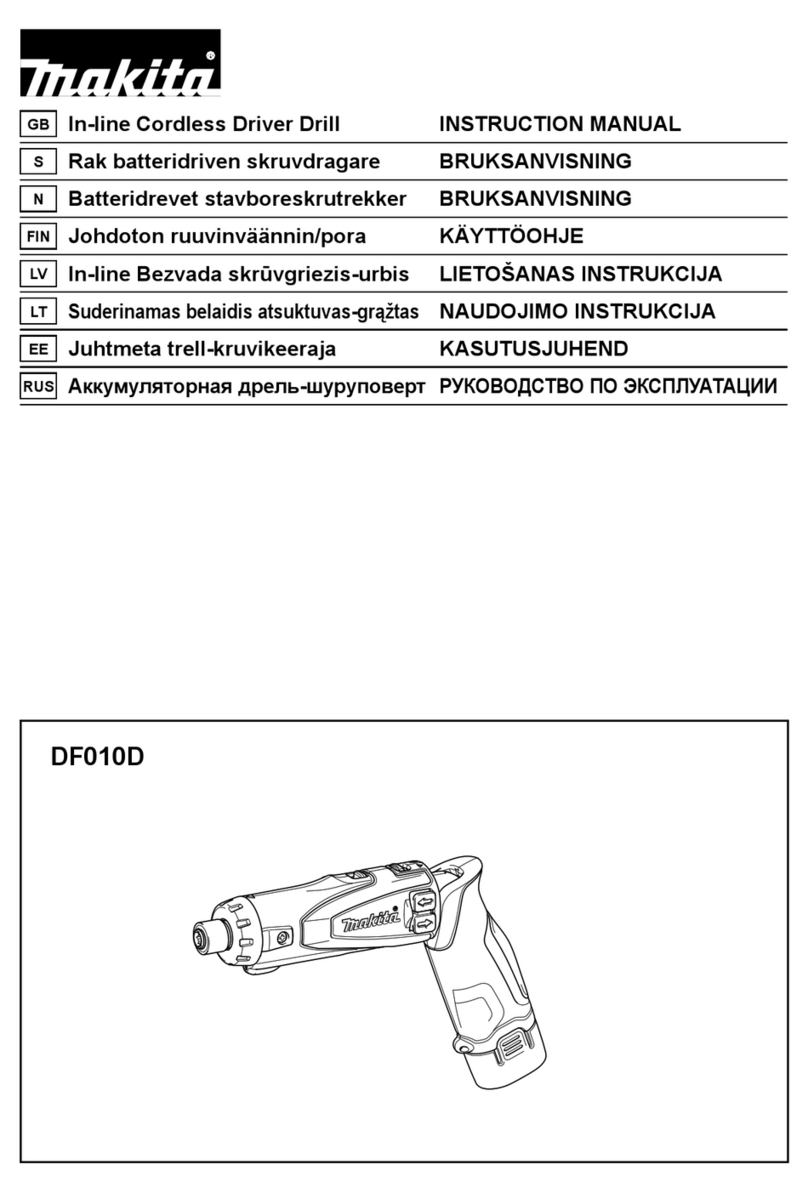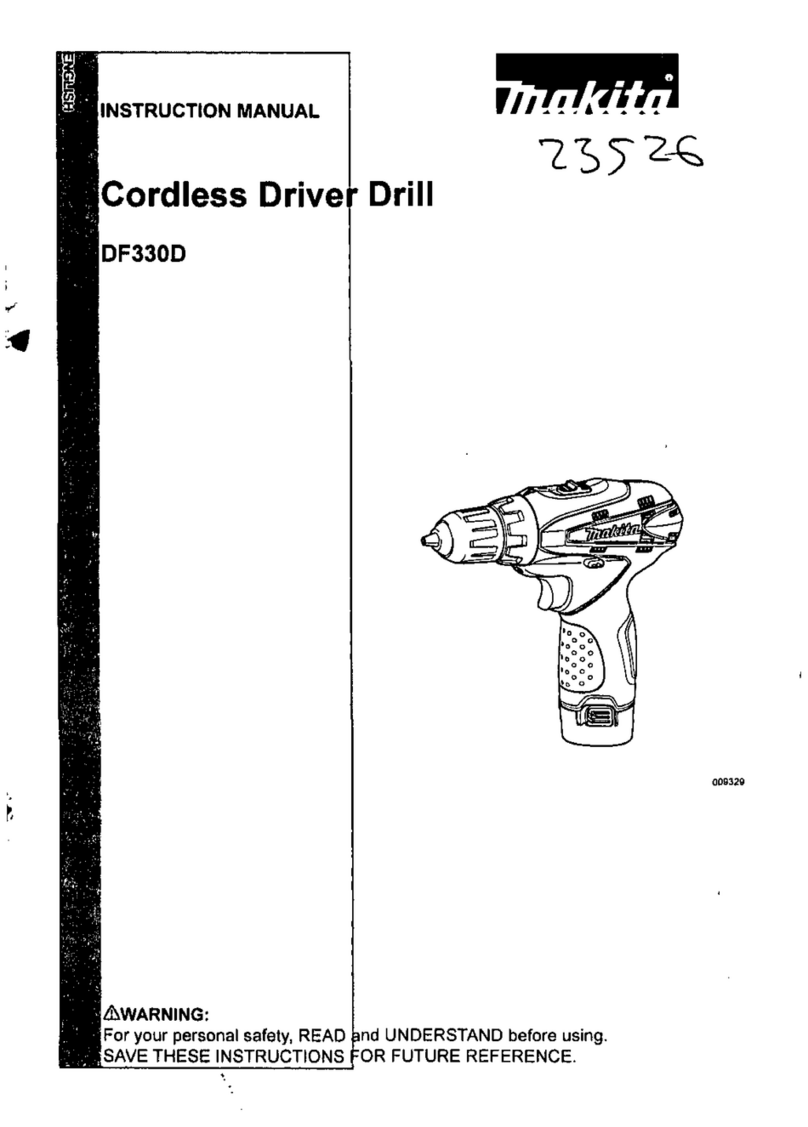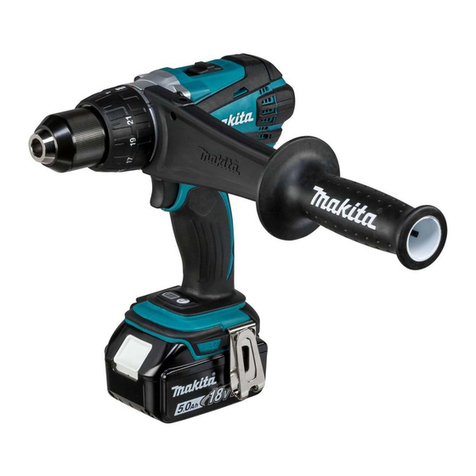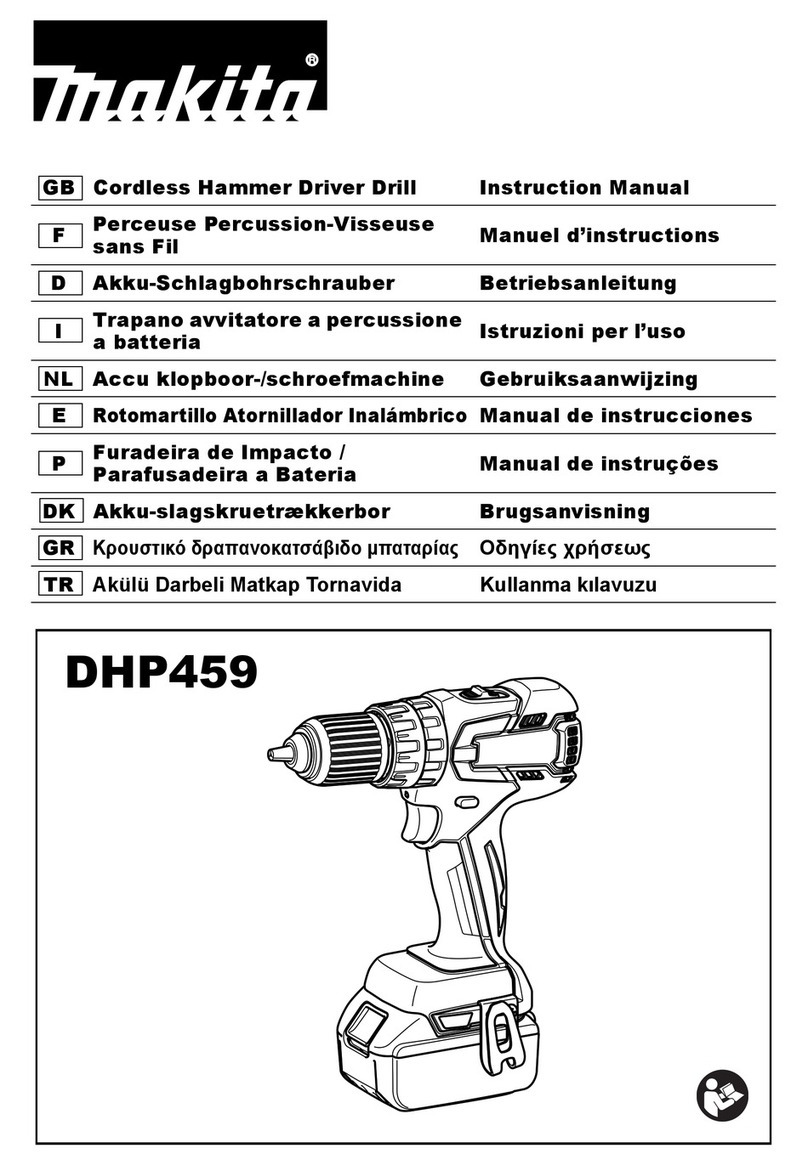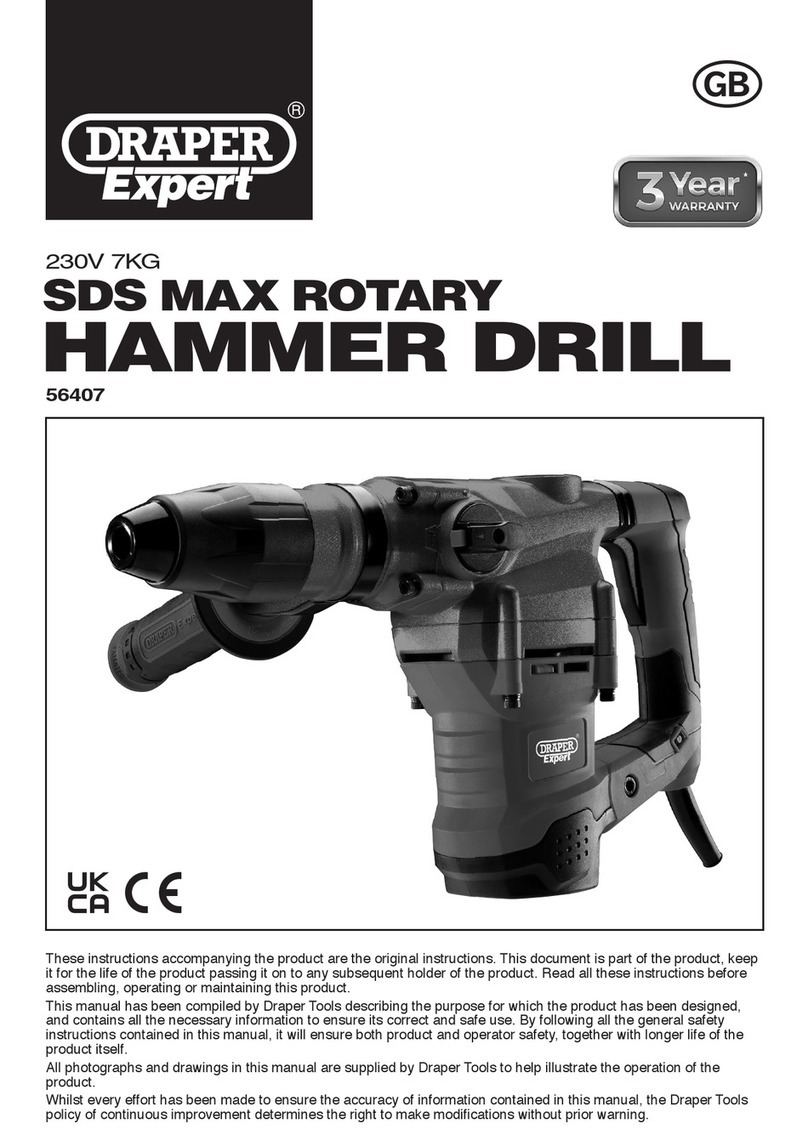
Work carefully and with concentration. Keep your work area
clean and avoid hazardous situations.
Take precautions for the protection of the operator.
If the cable is damaged or severed during operations, do not
touch the cable, immediately pull the main plug. Never use the
tool when the cable is damaged.
Before drilling in ceiling or walls make sure not to drill into
electrical mains, gas or water pipes. Use a metal detection
system where appropriate. Consult the structural engineer in
charge in order to determine the exact position of drilling before
you start. When drilling through ceilings, secure the area below
as the drill core may drop downwards.
Take care not to expose the tool to direct rain.
Do not operate the tool in areas with explosion hazard.
Do not operate while standing on ladders.
Material containing asbestos must not be drilled.
Never carry the tool by the cable. Before using the tool make sure to
check tool, cable and plug. Damages must be repaired by an
authorized specialist. Make sure that the tool is switched off before
connecting to the power outlet.
Manipulations of the tool will result in a forfeit of the warranty.
During operations the tool must be under constant supervision.
The tool should be switched off and disconnected from power when
not under supervision, in case of mounting or dismounting the tool, in
case of voltage drops or when fixing or mounting accessories.
If the engine stops during operations switch the tool off. Thus you
avoid an undesired sudden re-start of the engine.
Do not use when parts of the housing, the switch, power cable or plug
are damaged.
Electric tools must be visually inspected and tested by a specialist at
regular intervals.
When operating the drill, cooling water must never get into the
motor and all electrical parts. Overhead-drilling must only be
performed while observing suitable safety precautions (water
collection).
Stop operating when water is seeping out of the overflow tap in the
gear collar and take the tool to an authorized service point.
After an interruption of operations, the engine should only be switched
on again if the drill bit can be turned freely.
When operating the tool always wear ear protection.
Do not touch rotating parts.
